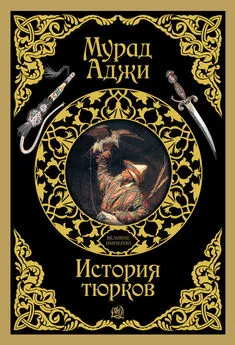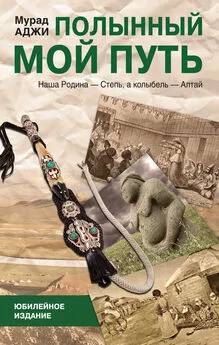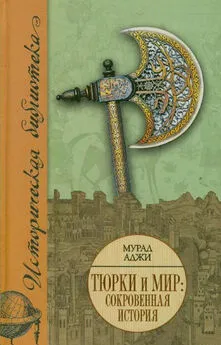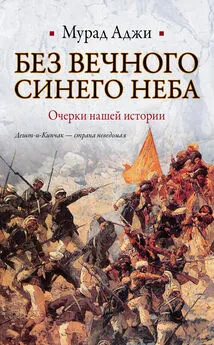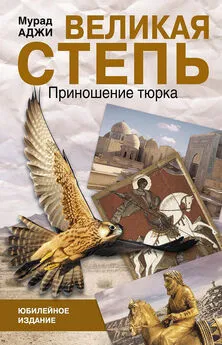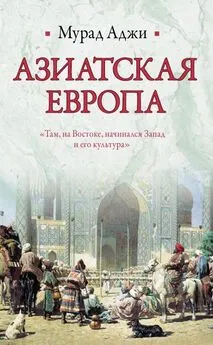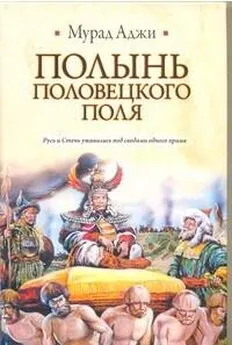Мурад Аджи - История тюрков
- Название:История тюрков
- Автор:
- Жанр:
- Издательство:АСТ
- Год:2015
- Город:Москва
- ISBN:978-5-17-087192-6
- Рейтинг:
- Избранное:Добавить в избранное
-
Отзывы:
-
Ваша оценка:
Мурад Аджи - История тюрков краткое содержание
В первой книге речь идет о становлении тюрков как народа, о его расселении по Евразии, о Великом переселении народов. Оно зародилось на древнем Алтае и к IV веку достигло Европы. Первыми узнали о высокой культуре тюрков Индия и Персия. Потом – Кавказ и Урал, Византия и Рим… Автор будто открывает окно в пленительное прошлое России. Вторая книга рассказывает о Средневековье, о его «темных веках». Уж слишком много загадок оставило то время! Каким стал мир после смерти Аттилы? Раскол Церкви, рождение ислама, Крестовые походы, походы Чингисхана, инквизиция – все это события, тесно связанные между собой. В их череде тюрки были и героями, и жертвами.
История тюрков - читать онлайн бесплатно ознакомительный отрывок
Интервал:
Закладка:
The Great Migration began in the Ancient Altai. At first, it was rather quiet and ordinary; soon, however, all of the vast Eurasian continent came to feel it. It was then that Turkic horsemen drove their mounts to the far reaches of the known world: starting from Central Asia, they reached the shores of the Pacific, Indian and Atlantic Oceans. Thousands of kilometres of the territory they had traversed now lay behind. The horsemen settled huge stretches of land that had barely been populated earlier. There was no force on earth capable of holding back and stopping this living tide that came pouring out of the Altai. All the armies everywhere gave way in encounter battle.
And in one of history’s great events the Ancient World was trampled under the hooves of the horsemen.
They destroyed all that was old in order to give people a new life.
The Great Migration of the Peoples was that most rare of events: in the history of mankind, such a thing has happened only once. The world has never known anything like it either before or since. The victories of Alexander the Great, the Roman emperors and even the famous Genghis Khan pale before it. They simply appear too ordinary.
Of course, the Great Migration did not begin all in one place, all by itself or all at once. The Turkic people had been gathering strength for seven centuries. For seven hundred years they had been laboriously preparing themselves for it, creating a culture which, following on the heels of Classical culture, would ennoble the world of people.
This was no accident; it could not possibly have been. People adopted the Dark Ages culture (and, later, that of the Middle Ages as well) without a struggle. Why? What was different about it? What was in it that so attracted people?
First of all, there was the belief in the God of Heaven – in Tengri, who watched over the Turkis. This faith of a Single God was something completely new in the life of humanity. The peoples of the Ancient World, like those of the world before it, were ignorant of it. They were pagans. Paganism and a belief in many gods distinguished this era.
The people of Ancient Greece, for example, prayed to Zeus and Hera; in the Roman Empire, they worshipped Mercury, Jupiter and other gods. They would bow their heads, offer sacrifices and beg for protection before their images. Save for the Turkis, the God of Heaven was unknown to the world; they did not pray to Him.
The God of the Altai was called Tengri, the Eternal Blue Sky. Under his eternally watchful eye the horsemen rode out into the world. They rode out boldly and confidently. It was for this reason that before each attack, before each new battle the horsemen would loudly chant «Allah billah! Allah billah!» – Turkic for «With God», or «God is with us!». They were always victorious.
Other peoples immediately noticed this.
At that time, they believed that victory in battle was due not to the warriors, but to their Patron God, and to Him alone. In accepting the new faith, people were also begging to come under the protection of a powerful god: this was the role of the faith in the lives of the nations. It is because of this that ethnographers reserve a special place in their research for religion.
….The second distinguishing feature of Turkic civilisation was iron – the metal that the Great Tengri gave to his people.
Iron allowed the Altaians to create a huge number of useful objects for the home, work and waging war. No one in the world cast iron as artfully or used it for so many different purposes. Thousands of smithy forges worked day and night to turn out this precious metal; iron was then valued more highly than gold. This, too, drew other peoples to the Turkis.
In the Altai there was a holiday of iron; it first appeared five hundred years before the beginning of the Christian Era, when they had just learned to smelt the precious metal in their smithy furnaces. The Great Khan himself opened the first holiday. He approached the anvil and struck the red-hot metal with a hammer. Each blow awoke a certain pride within the people, recalling the greatness of the ancestors who had given their descendants the gifts of freedom and strength. Only then would the festivities begin: horse-racing, dancing, singing, feasting and revelry.
It was a holiday celebrated by all the Turkic people.
It is clear that the Great Migration was not just people moving to a new location; nor was it merely the conquest of neighbouring lands. It was something else entirely. It resulted in the irrevocable destruction of mankind’s Bronze Age and opened the way to the Age of Iron.
The Turkis consciously broke with a past that had outlived its usefulness and embraced a new, progressive future. This happened across the continent.
People talk about this period in different ways, some calling it the Barbarian Invasions, or the Invasion of the Huns. This is not true. It is not true for the simple reason that the belief in the God of Heaven and iron first appeared among many peoples at this point in history – immediately after their initial contact with the Turkis, during the Dark Ages.
The horsemen – the emissaries of the God of Heaven – were deified.
Even in appearance the Turkic people differed from others. They had their own unique features, quite unlike those of any other nation on the planet. The horse that would become the symbol, or tamga (tribal emblem), of the newcomers from the Altai as well as the banners bearing the Cross of Tengri were among those features that distinguished the Turkis from other peoples.
The Ancient World had never seen anything like it. Even their clothing was unlike anything it had seen before, since it was the clothing of a horseman – a missionary and warrior who never spent a moment away from his horse.
No, the Great Migration was most certainly not the spontaneous exodus from the Altai that some write about. Nor was it an invasion. It was not «wild nomads» who left their homelands, but a nation that had become crowded inside the valleys of the Altai. They needed new lands and new expanses in which to grow. It was at this time that the word kipchak first appeared – a «crowded one». This was the name given to the roaming horsemen.
When speaking of the Altai, they meant an entirely different land than that which we mean today: all of Southern Siberia, from Lake Baikal in the east to the Pamir Mountains in the west. That is to say, a huge, mountainous land that stretched to Tibet – this is what they called the Altai.
There are many monuments to these bygone days – witnesses to the past, one might say. Sometimes they are quite surprising. Examine them more closely.
Thus, in 1974, archaeologists found a royal burial mound in north-western China, a region where Turkic-Uighur people live to this day, though they have long since forgotten their true history. The finds from the ancient burial mound confounded the scholars. They were completely taken aback by clay statues – several thousand of them – that showed the clothing of warriors and the accoutrements of their horses. They all had their faces to the north, towards Uch-Sumer, the holy mountain of the Altai. It clearly was not the work of the Chinese.
They were not Chinese, because there were no Chinese living here in the 3rd century BC. Their country lay far to the south, beyond the Great Wall. The clay warriors are portraits of today’s Uighurs, Kyrgyz, Kazakhs, Khakass, and Nogay. Faces such as these are also common among Kumyks, Tatars and Bashkirs, but not among the Chinese.
Yet another example, one that is also extraordinarily striking:
Not far from the town of Rummindei, in Nepal, there is a column with an ancient inscription. The Buddhists will assure you that it is a holy place, for here is carved the name of the founder of their religion – a man who came from the Altai, from the clan of Shakyas. The column was raised in the 5th century BC. It was at this time that the Indians first laid eyes on the Turkis and were surprised by their appearance. This is why they called Buddha the «Turkic God», or the «Buddha Shakyamuni». From this time forward they would depict him with blue eyes, like those of other Turkis.
Today Buddhism is one of the world’s main religions, but time has hidden within it a mysterious trail – one which is, however, still visible to those who know how to look for it. There is a science of religion, a discipline which studies the secrets of different faiths and allows us to understand much about the past.
For example: in their communes, Buddhist monks live according to a strict set of rules, one which is known to scholars. What, one might ask, can this information tell us? As it turns out, it can tell us a great deal. To someone with the proper background it reveals that Buddhism was in fact founded by the Turkis. There is a great deal in common between the belief in Tengri and the teaching of Buddha. There can be only one source for these teachings: the wisdom of the Altaic sages. This is why the Ancient Altai was called the Earthly Paradise, the Flowering Eden: it was here that the world’s great religions began.
They came from the Altai’s Eternal Blue Sky.
Three thousand years ago, spiritual quests began in the Altai. The belief in a God of Heaven was born. The times were harsh. Then, in order to preserve their ancient religion, some of the Turkis migrated to India, Iran and the steppes of Europe. They were called Scythians and Saks. Spiritual protest provided the first roads out of the Ancient Altai.
In the 2nd century, the mass exodus of Altaians onto the steppes began, but the reason for it was quite different: it was economic. By this time, simply too many Altaians had been born, and the mountain valleys were now crowded. The nation needed new farmland, pastures and grasslands.
Turkic speech has been heard ever since in the Caucasus, the Middle East and Europe. It was there to which the horsemen came to open the Dark Ages.
Вступление
Ex oriente lux —
«Свет начинается с Востока»…
и преображает мир
В жизни каждого народа, как и в жизни любого человека, происходят события. Их много. Собственно, жизнь и есть бесконечная череда событий. Но одни незаметны, обыденны, другие, наоборот, ураганом сметают все вокруг. Крушение старого всегда становилось рождением нового. Именно так начинались и так заканчивались эпохи в истории человечества – событиями, потрясающими мир.
Сметающим и ураганным было Великое переселение народов, оно прошло и неузнаваемо преобразило жизнь на евразийском континенте. Будто смерч. После него Древний, или античный мир вступил в новую эпоху – эпоху С редневековья.

Мишель Коломб.
Битва святого Георгия с драконом.Начало XVI в. Лувр
А начиналось Великое переселение тихо и буднично, вдали от крупных городов, однако вся огромная Евразия ощутила его. Тогда тюркские конники устремились в разные стороны света, из Центральной Азии они вышли к берегам Тихого, Индийского, Атлантического океанов. Тысячи километров пути остались у них за спиной. Огромные, ранее почти безлюдные просторы заселили всадники. И не нашлось на свете силы, способной сдержать этот живой поток, хлынувший с Алтая. Остановить его. Все армии уступили ему во встречном бою.
Читать дальшеИнтервал:
Закладка:
